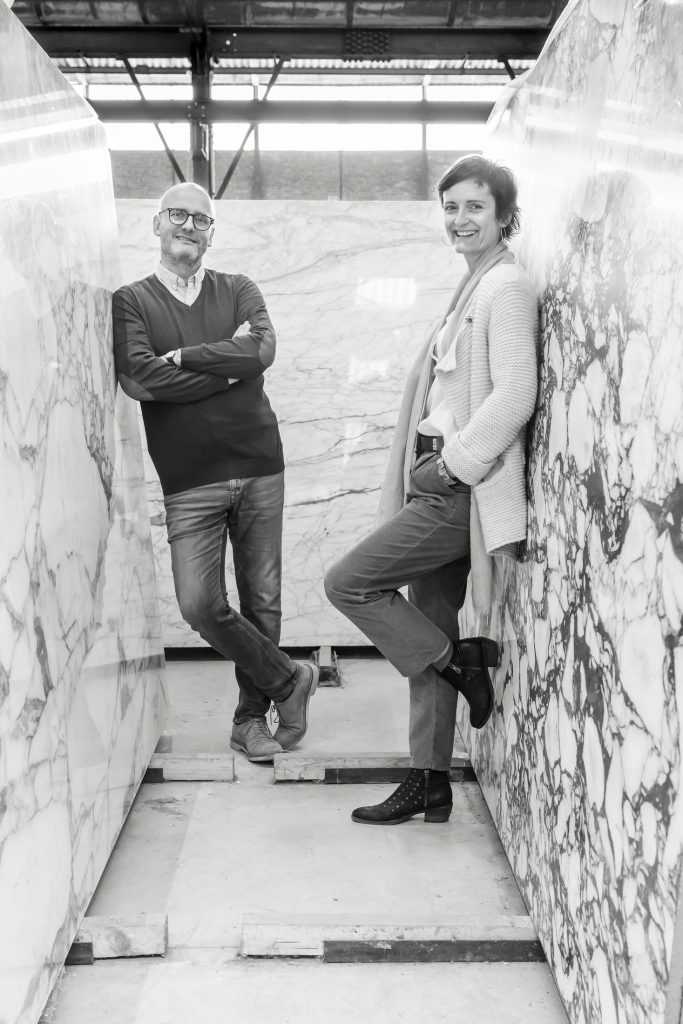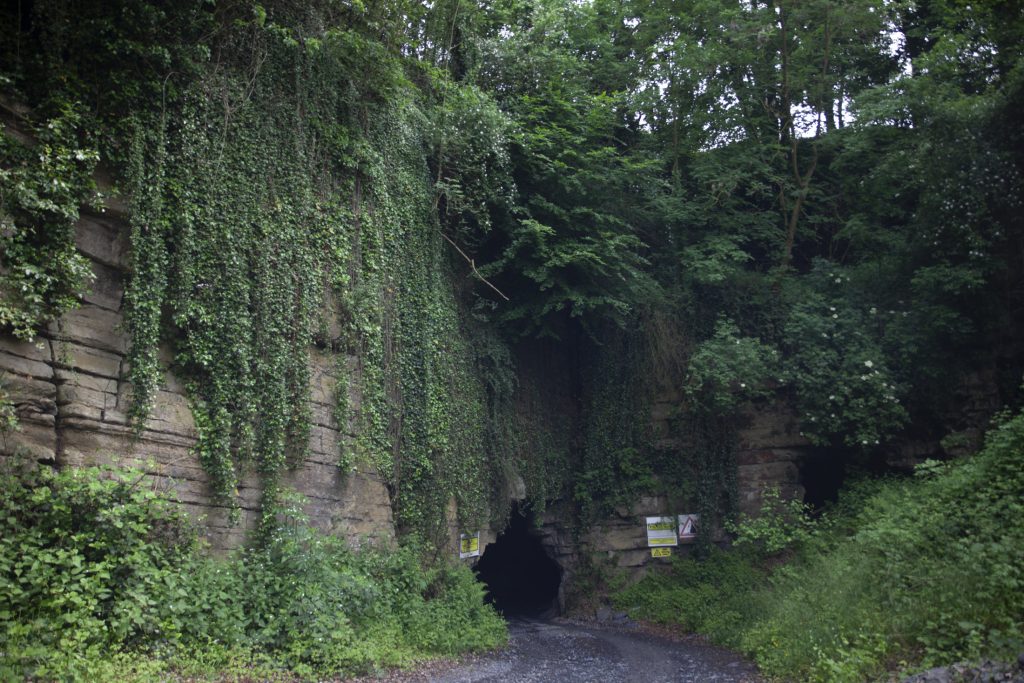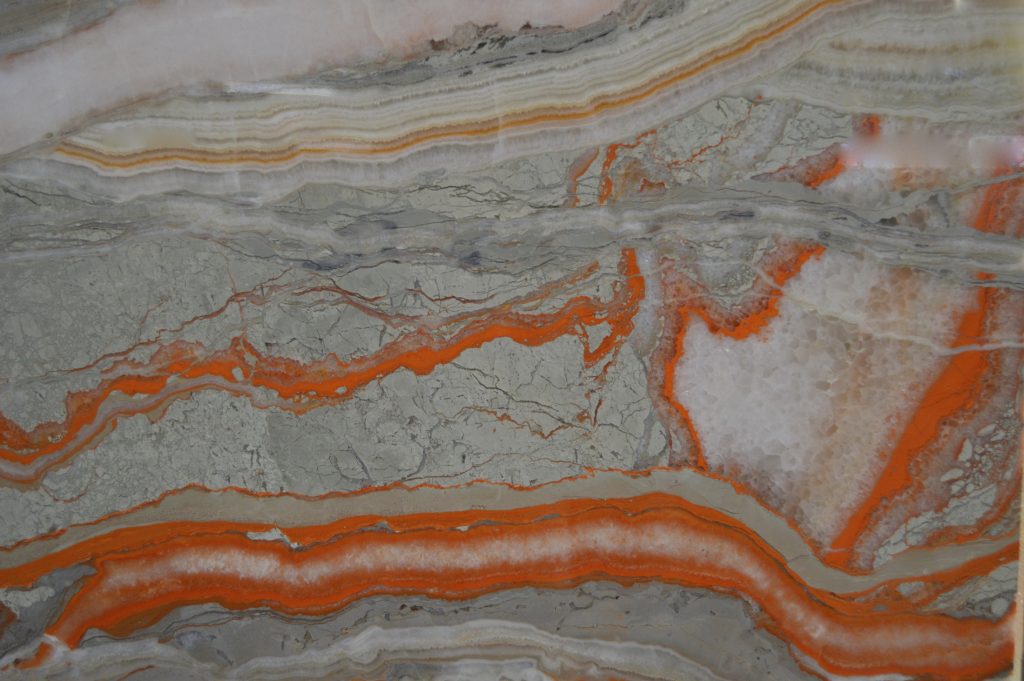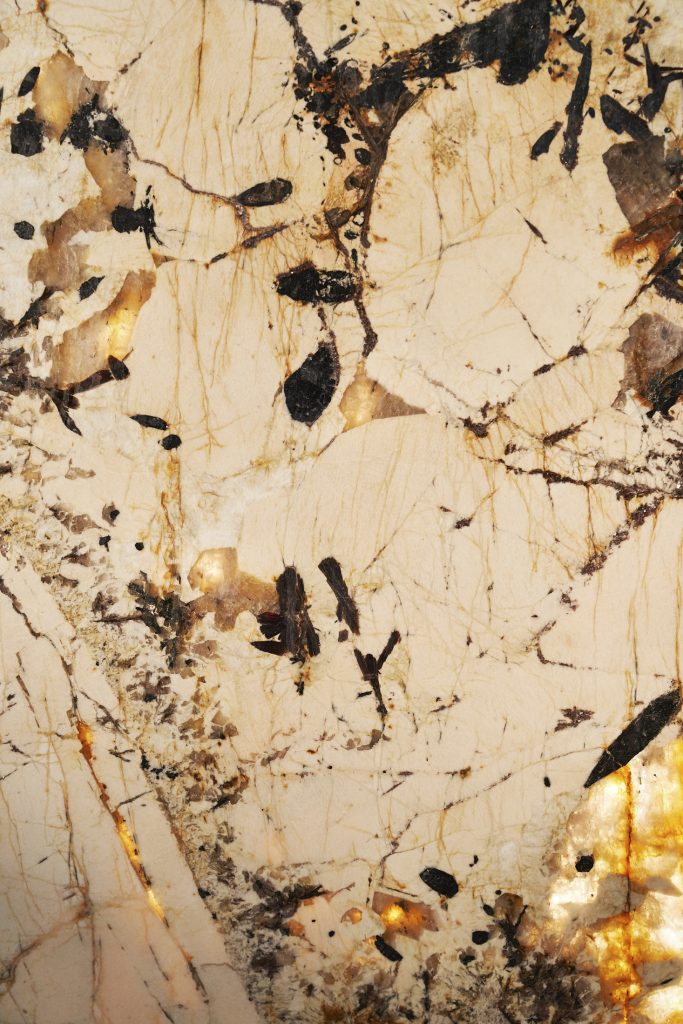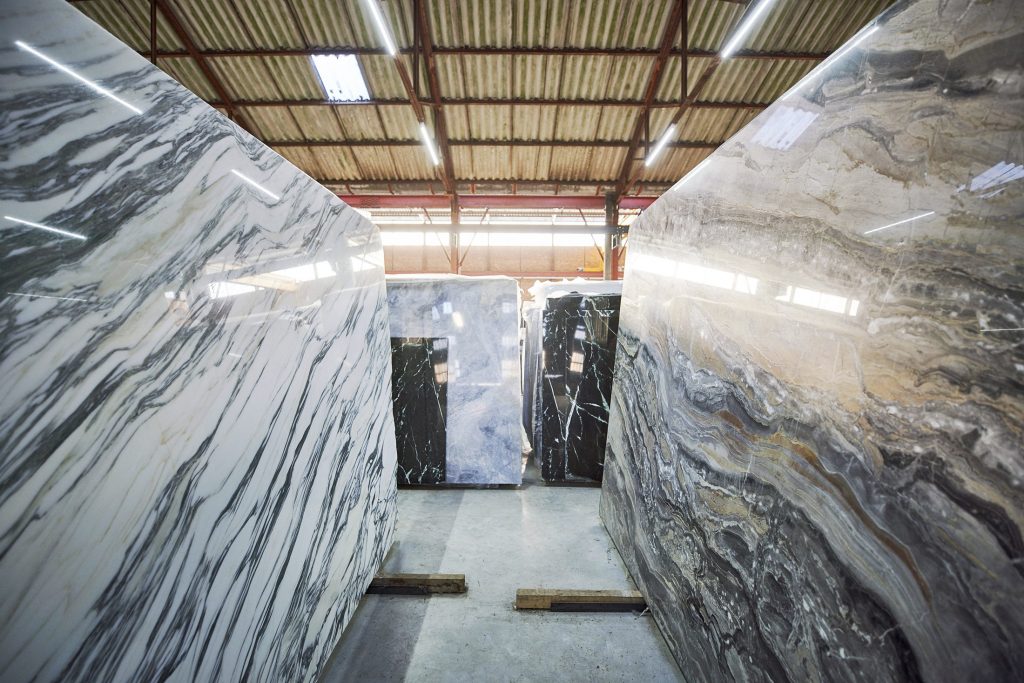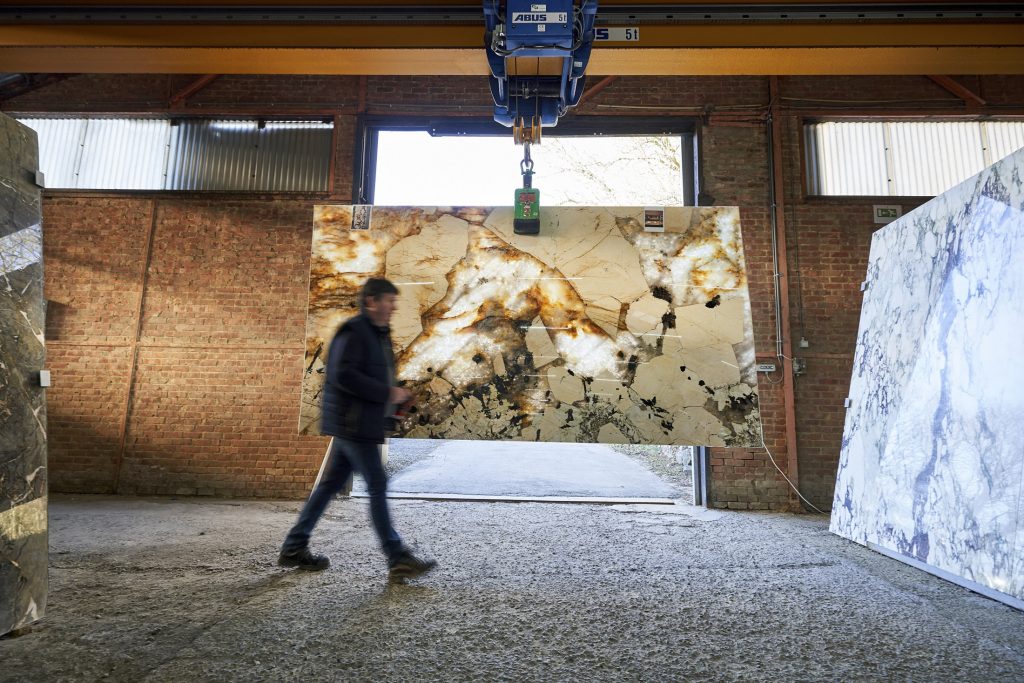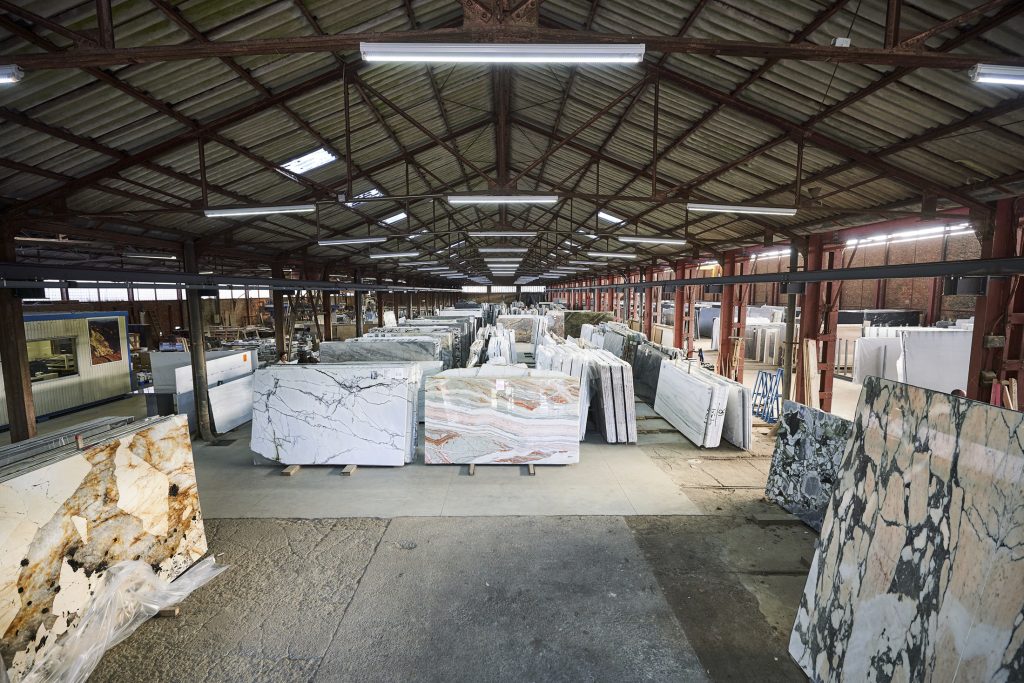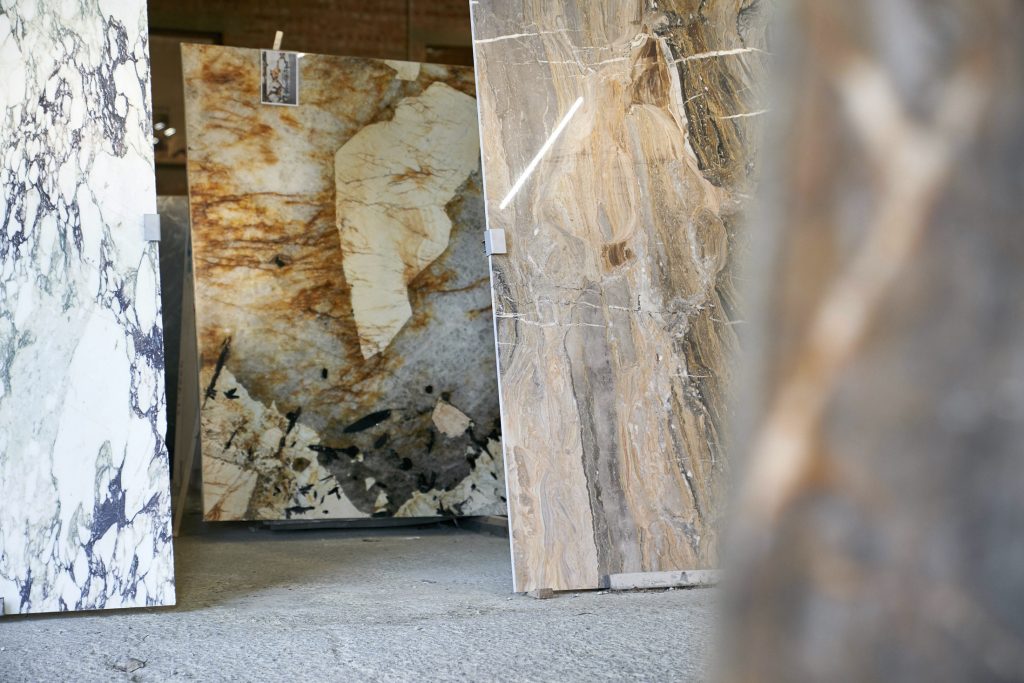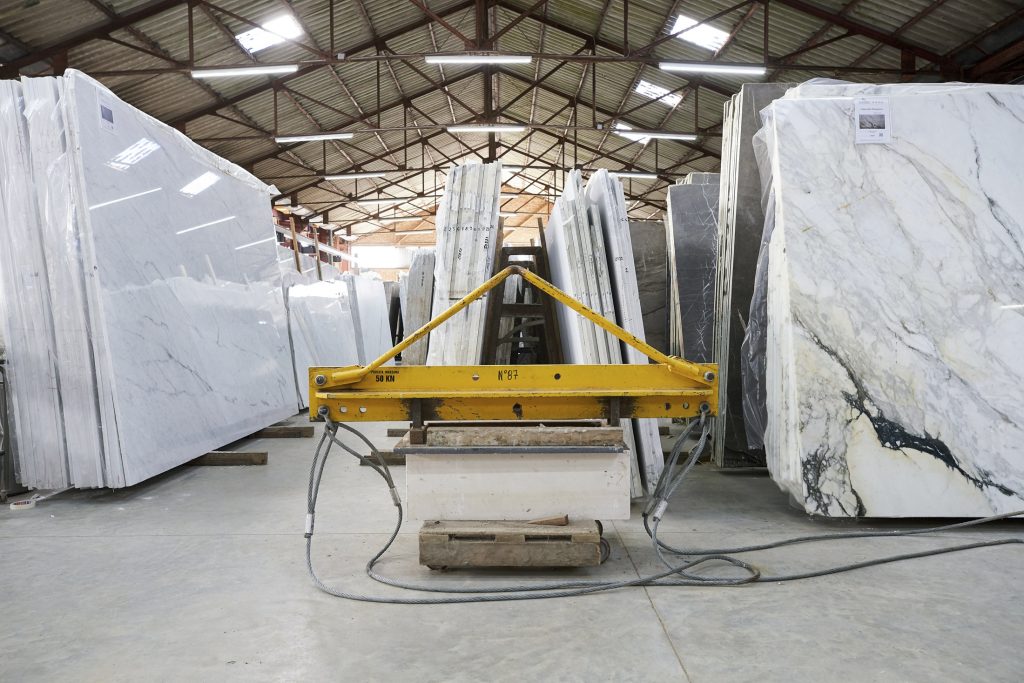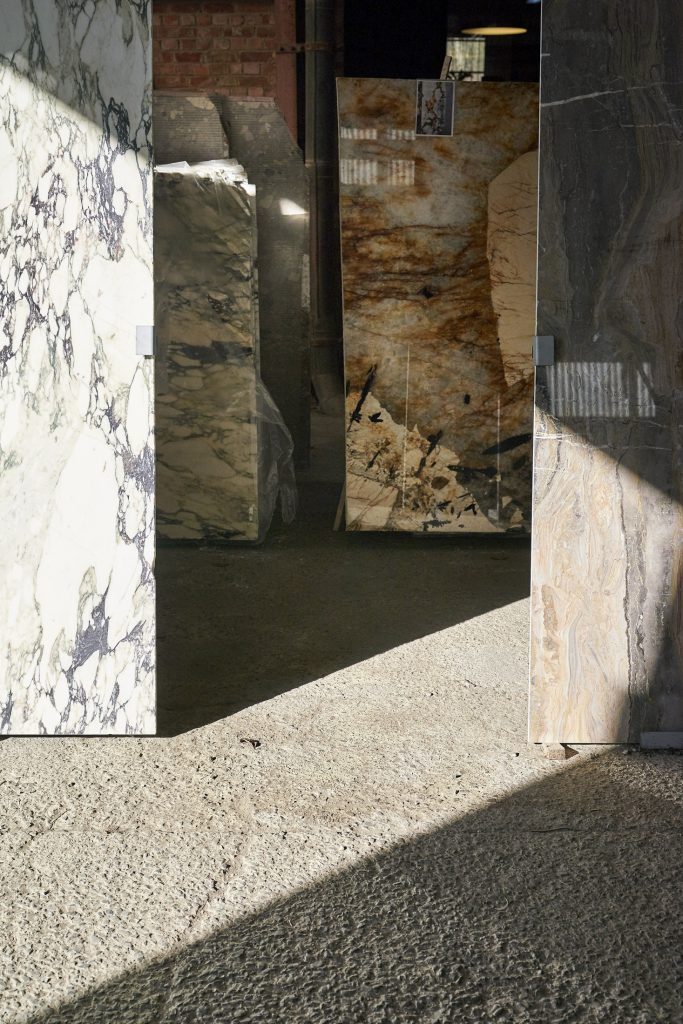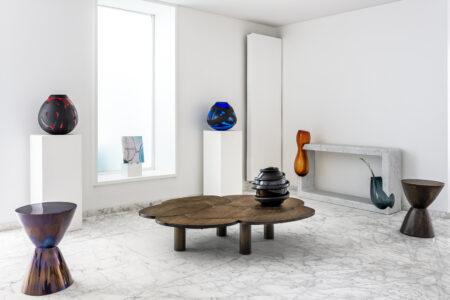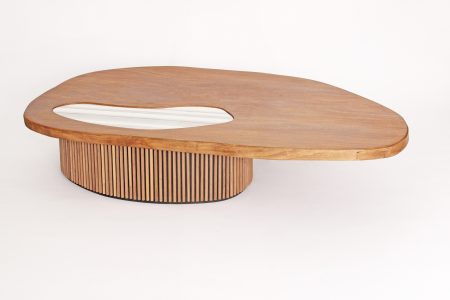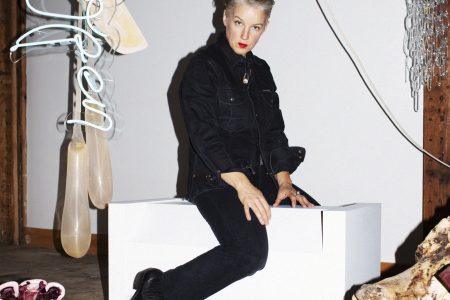
Cromarbo: Open-Book Marble
For four generations, the Croonenberghs family has shared their passion for marble with architects, designers and lovers of fine materials and stories through their family business. Now, Isabelle Croonenberghs and her brother Bruno are orchestrating the future of Cromarbo.
TLmag: The profession has changed since the days that your great-grandfather specialised in marble processing. How would you define your own profession?
Isabelle Croonenberghs (IC): In the old factory which now serves as a showroom, the company’s workers sawed and polished the slabs of raw marble. We no longer perform this transformation ourselves. Today, our job is to travel to find the most beautiful blocks of marble around the world. When my father was in charge of the company, he bought exclusively from Portugal and Italy, specifically Verona, which remains the hub of the marble market. The recent development of extraction tools has made it possible to exploit new quarries and open up the market. Our marbles and granites now come from Turkey, Greece and India. We buy sliced, polished and softened blocks. Our role is to tell our customers the story – the open-book – of these stones, which we then send to a marble worker who will shape them.
TLmag: How do you explain the renewed interest in this material?
IC: The magic of marble lies in the fact that these blocks, with all their nuances and individuality, let you create a unique product that cannot be found anywhere else. A marble slab is like a painting. It is self-sufficient. Some customers visiting our showroom find it hard to believe that certain stones, such as Iranian onyx with its shimmering orange reflections, are the result of nature’s work; a unique geology that has taken millions of years.
TLmag: How do designers use marble in their designs? Have you seen an evolution?
IC: We see that some designers are quite daring in their choices. They are looking for the fault, the accident, what might be considered a defect, but which they sublimate with their creativity. Marble gives incredible gifts to those who know how to view it with a different eye. Its imperfection is a source of beauty and singularity in an architectural project.
TLmag: Marble is also a material which comes in many different varieties. You offer no fewer than 200 references, and each represents a journey in itself...
IC: The appeal of the unique and the exclusive is a deep-rooted trend. My brother and I seek to offer rare and extraordinary products. This approach obviously involves some risk. Sometimes blocks may stay in our showroom for two years before a customer is interested. But when an architect chooses, for example, a marble with subtle veins to create an office desk, he knows it will be an incredible, out-of-the-ordinary calling card for him.
TLmag: In the field of design, we are talking more than ever about sustainability. How does marble fit in this conversation?
IC: Thanks to its very low grey energy, marble is, like solid wood, a particularly durable material. As soon as it is extracted from the quarry, it is taken to a nearby sawmill to be sawed and polished. In terms of environmental impact, it rivals all other materials, including ceramic or quartz composite, for example.
TLmag: Although it represents only a very small part of your turnover, you champion Belgian marble. Why?
IC: Quite simply because the Gris des Ardennes, the Rouge Griotte and the famous Noir de Mazy, a rare and very pure marble extracted from an underground quarry located in Golzinne, near our showroom, are part of our heritage. Given their high price, they are the province of true enthusiasts, but as it is now fashionable to highlight local assets and talents, it makes sense to include these treasures extracted from particularly difficult-to-access quarries. Belgian marble is an invaluable gift that we want to champion at all costs.
TLmag: You often collaborate with architects and designers. How do you view Belgian design?
IC: In recent years, marble has been very present in the work of Belgian designers. I am thinking of Ben Storms, who used Pur Gris des Ardennes for his InVein table. At the Collectible Design Fair last March, we worked with Rico Bahr on a series of tables that were displayed at the event. These collaborations are like magic moments. In the coming years, we plan to work more with certain Belgian designers who share our love of marble.
TLmag: As an art historian, you’re cultivating a more artistic project in addition to your profession. Could you tell us more about it?
IC: About a year ago, when sculptor Félix Roulin first discovered our showroom, he was fascinated, both by the magic of marble and by the authenticity of the industrial building that houses it. Following this meeting, we decided to organise an exhibition of his works in our space. This dialogue around marble is the essence of our profession, which motivates us more than ever to move forward.
